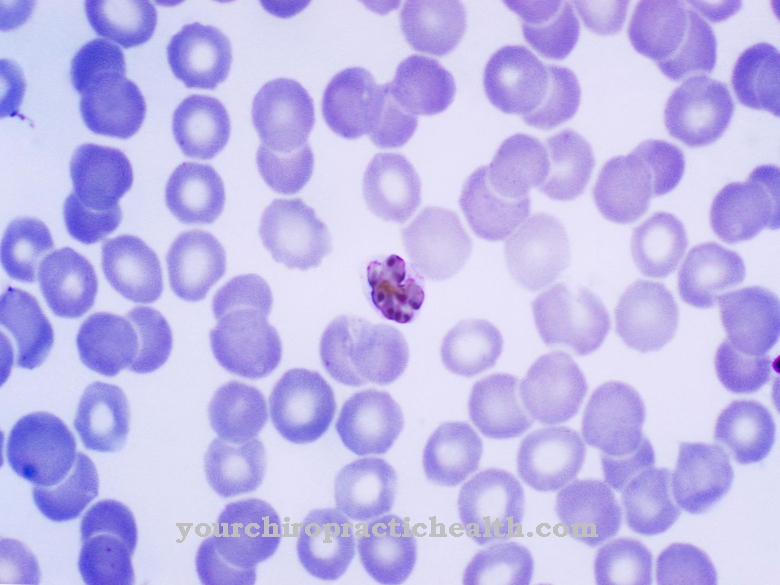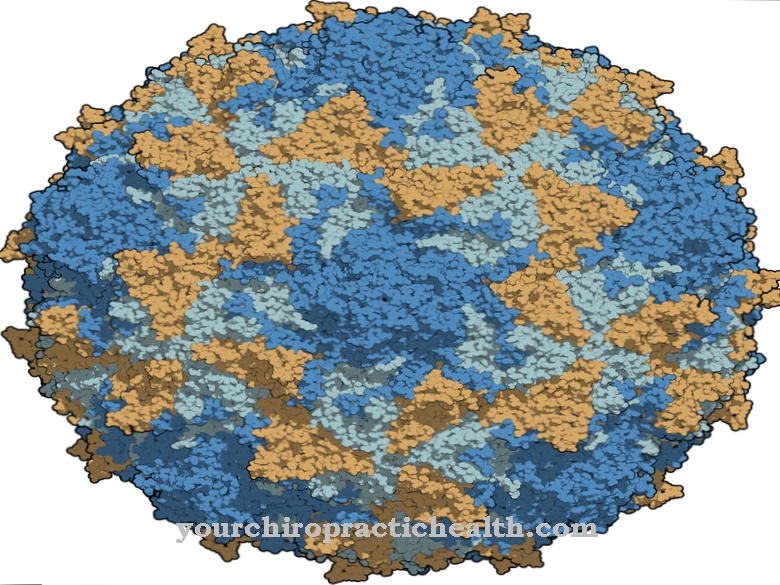Polyomaviridae are a group of DNA viruses without a virus envelope, which have a genetic material made from DNA and contain a capsid made up of more than 70 capsomeres. The genus includes, for example, viruses such as the human polyomavirus or the BK and JC virus. Especially since the BK virus has meanwhile adapted strongly to humans as hosts.
What are Polyomaviridae?
The Polyomaviridae correspond to DNA viruses without a virus envelope. Your genetic material consists of DNA. The Polyomaviridae mainly play a role for vertebrates. The infected organisms suffer from persistent infections of various kinds.
The murine polyomavirus was the first to be documented. This virus causes various types of tumors in newborn mice. This genus of polyomaviruses, which in turn includes various subspecies, belongs to the Polyomaviridae. In addition to the monkey polyomavirus, these species include, for example, the baboon polyomavirus 2, the human polyomavirus or the bovine polyomavirus. Species such as the chimpanzee polyomavirus and the Merkel cell polyomavirus have also been provisionally classified as species within the genus Polyomavirus.
Occurrence, Distribution & Properties
The virus ions of a polyomavirus are composed of a bare capsid with a diameter between 40 and 45 nm. Each capsid consists of 72 capsomeres. These capsomeres are icosahedral symmetrical in their arrangement and are formed by five different molecules at their base. The molecules of this pentamer are not uniform to one another, but are skewed. We are therefore talking about twisted icosahedral symmetry. The interior of the capid is stabilized by capsid proteins VP2 and VP3, which form the VP1 framework of the capid. The individual proteins interact with the DNA in the capsid.
In some cases, virus particles reject this structure and can thus, for example, also correspond to capsids with a normal structure, appear as microcapsids or have an irregular tubular structure.
VP1 capsid proteins can aggregate and in this way form a virus-like particle without the aid of further virus proteins. However, the particles formed in this way are not capable of packaging nucleic acids.
Inside the capsids there is a covalently closed ring made of DNA from the virus genome. As with the genus Papillomaviridae, the ring is twisted several times. Together with the cellular histones, the DNA ring forms nucleoprotein complexes with a structural similarity to eukaryotic nucleosomes.
Environmental stability is one of the most important properties of the capsids. Due to this property, Polyomaviridae cannot be inactivated with diethyl ether or detergents. So washing hands with soap, for example, is not an effective preventive measure against these viruses. Temperatures can hardly affect them either: up to 50 degrees Celsius they are considered to be heat-stable for an hour. Only heat in combination with magnesium chloride makes the capsids unstable, since their capsid structure is presumably dependent on divalent cations.
You can find your medication here
➔ Medicines to strengthen the defense and immune systemIllnesses & ailments
Avian polyomaviruses cause various infections, such as the French moult. In people with immunosuppression, the BK virus can promote transplant loss after a kidney transplant. The BK virus is also associated with respiratory infections and, in children, with cystitis. Hemorrhagic cystitis is common in patients who have had bone marrow transplants. The virus can cause ureteral stenosis in patients with kidney transplants. In addition, AIDS patients may develop meningoencephalitis from the virus. The BK and JC viruses persist in the tissue of the kidneys.
Infections with the viruses are extremely rarely fatal because the viruses have adapted to humans as hosts and do not want to damage their reservoir host in this way due to their own disadvantages. Humans have also adapted to the virus over the generations. The current level of infection with the BK virus is estimated at up to 90 percent.
However, the JC virus can have serious consequences, such as progressive multifocal leukoencephalopathy, in immunocompromised patients. PML is also associated with an often fatal course. Various tumor diseases are associated with the simian virus 40. The contamination of the population with these species of the Polyomaviridae is far lower than for the BK viruses. The adaptation of virus to humans and humans to virus is less advanced for this species.

























.jpg)


